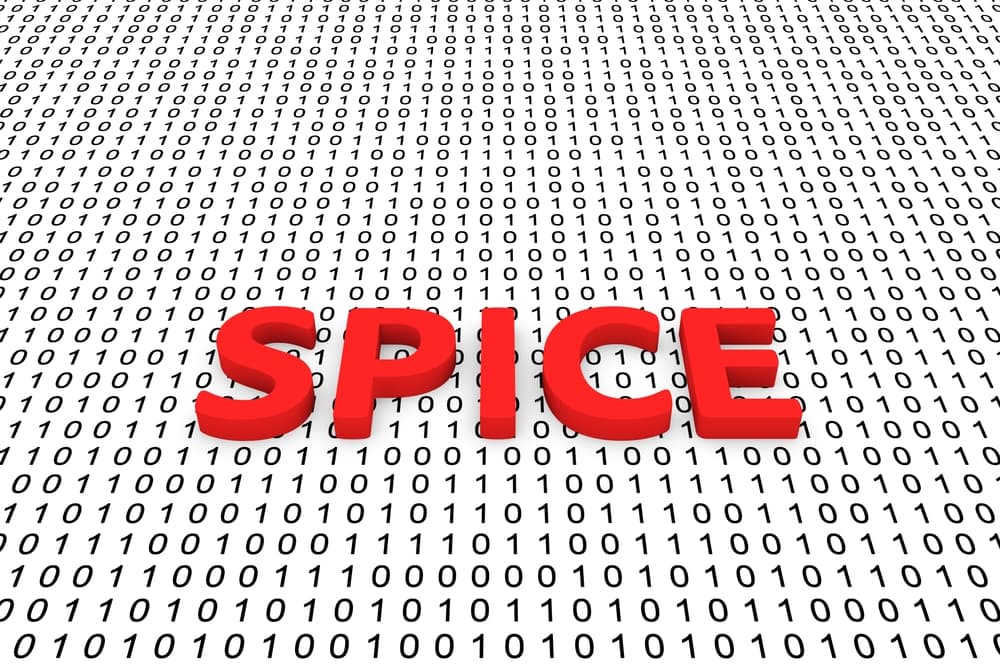
SPICE (Simulation Program With Integrated Circuit Emphasis) is a widely used tool for simulating electronic circuit behavior before physical implementation. Diodes—components that allow current to flow in one direction while blocking it in the reverse direction—are commonly modeled in SPICE using parameters to represent their behavior. These parameters can be used to simulate the diode’s characteristics under various operating conditions.
Diode SPICE Model Parameters | |||
Name | Parameter | Units | Description |
IS | Saturation current | A | Current that flows through the diode when it is reverse-biased, and typically on the order of nanoamperes or smaller. |
RS | Ohmic resistance | Ω | Represents any series resistance that might occur in the diode due to the leads or contacts. It affects the voltage drop across the diode under forward bias. |
N | Emission coefficient | – | The emission coefficient measures the deviation of the diode from the ideal diode equation. It takes into account effects such as recombination current and series resistance. The value is typically between 1 and 2 for most diodes. |
TT | Forward transit time | sec | Transit time across the diode junction under reverse bias conditions. It accounts for the delay in the depletion region when the diode switches from the forward-biased to the reverse-biased state. |
CJO | Zero-bias junction capacitance | F | Zero-bias junction capacitance of the diode. It characterizes the charge storage properties of the diode and affects its high-frequency behavior. |
VJ | Contact potential | V | Built-in voltage across the diode when it is in thermal equilibrium. It is determined by the materials and doping levels used in the diode construction. |
M | Grading coefficient | – | Used in some diode models to represent the variation of doping concentration within the diode. It affects the shape of the depletion region and, thus, the diode’s behavior. |
EG | Energy gap | eV | Energy bandgap of the semiconductor material from which the diode is constructed. It determines the energy required to excite an electron from the valence band to the conduction band, thus allowing current flow in the diode. |
XTI | Saturation current temperature | – | Temperature exponent for the saturation current of the diode, representing how the saturation current varies with temperature. |
KF | Flicker noise coefficient | – | Characterizes the flicker noise in the diode. It quantifies the magnitude of the flicker noise as the diode operates. |
AF | Flicker noise exponent | – | Exponent in the flicker noise equation, determining how the flicker noise varies with frequency. |
FC | Forward-bias depletion capacitance coefficient | – | Exponential capacitance-voltage relation of the diode. It indicates how the diode’s capacitance varies with the applied voltage. |
BV | Reverse breakdown voltage | V | Reverse breakdown voltage of the diode, which is the voltage at which the diode breaks down under reverse bias conditions. |
IBV | Current at breakdown voltage | A | Current at which the reverse breakdown voltage occurs, indicating the leakage current through the diode when it is in reverse breakdown. |
TNOM | Nominal temperature | °C | Nominal temperature at which the other parameters are defined. It is typically set to 27°C (300 Kelvin), unless otherwise specified. |
Diode SPICE Model Parameters: A Deeper Dive
Proper selection and characterization of these parameters are essential for accurate simulation results. To model a specific diode type, such as the Schottky, these parameters may differ. Therefore, it is essential to use the parameter values for your specific electronic component, which can be derived from the component datasheet or gained through empirical measurement. In addition to individual component performance investigation or verification, designers can also analyze and predict how diodes will behave in various circuits by performing SPICE simulations.
Analyzing Circuit Performance
Diode SPICE model parameters can be used to analyze various aspects of circuit performance, such as voltage and current distributions across diodes, temperature variations, and transient responses.
Voltage Drop and Current Flow
Under different operating conditions, designers can analyze the voltage drop across a diode and the resulting current flow by specifying diode parameters such as the saturation current (IS) and emission coefficient (N).
Forward and Reverse Bias Characteristics
Diodes can be analyzed under forward and reverse bias conditions. Using SPICE parameters designers can simulate voltage-current characteristics accurately, enabling them to understand the diode’s conduction characteristics.
Temperature Dependence
Using diode SPICE models, designers can analyze how the diode’s behavior changes with temperature. A thorough understanding of the effects of temperature is essential for ensuring circuit reliability.
Frequency Response
Designers can assess the behavior of diodes at different frequencies using capacitor models (such as junction capacitance), which is especially important in high-frequency applications where the diode’s capacitance can affect circuit performance and signal integrity.
Transient Response
Using transient response simulation, designers can assess circuit stability, response times, and dynamic behavior in applications such as switching power supplies and signal conditioning circuits. Transient response characteristics include how a diode responds to sudden changes in voltage and current.
Power Dissipation
With diode SPICE models, designers can calculate and analyze power dissipation in ICs and discrete diodes under various operating conditions, which helps select diodes with appropriate ratings to prevent overheating and ensure long-term reliability.
Rectification and Regulation
Diode SPICE models enable designers to simulate rectification circuits and voltage regulation circuits. By analyzing these circuits, designers can assess efficiency, output ripple, and voltage regulation accuracy.
Overall, diode SPICE model parameters enable designers to thoroughly analyze and optimize circuit performance, leading to the design of efficient, reliable, and cost-effective electronic systems.
Where Can You Learn More?
Ultra Librarian partners with many leading electronics vendors and component manufacturers who provide robust SPICE model libraries. When it comes to electronics development, it’s crucial to trust your tools and suppliers, so we only recommend tools we know will be reliable.
If you’re looking for CAD models for common components or diode SPICE model parameters, Ultra Librarian helps by compiling all your sourcing and CAD information in one place.
Working with Ultra Librarian sets up your team for success to ensure streamlined and error-free design, production, and sourcing. Register today for free.







